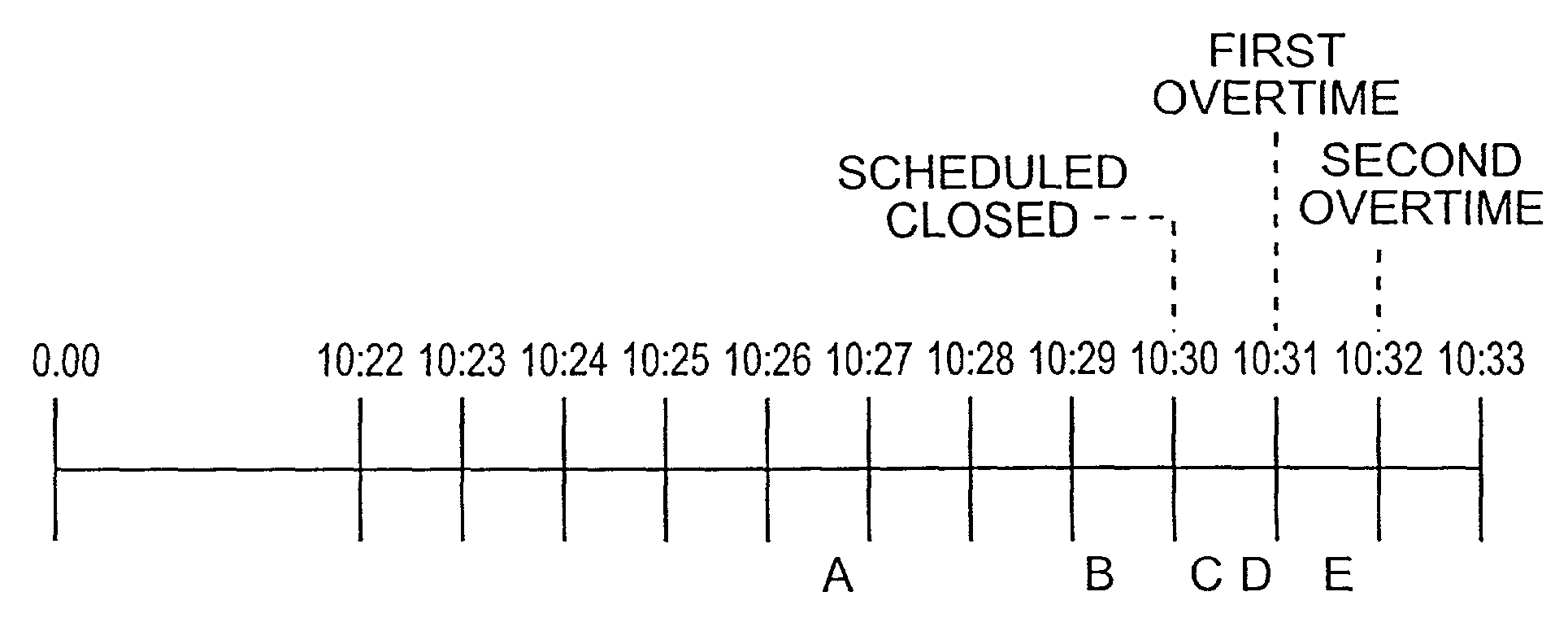Method and system for dynamically controlling overtime in electronic auctions
a technology of dynamic control and auction, applied in the field of business-to-business auction, can solve the problems of high transaction cost, information search cost, customer satisfaction, etc., and achieve the effect of maximizing the competitive nature of an auction, detecting, preventing and removing, and increasing competition
- Summary
- Abstract
- Description
- Claims
- Application Information
AI Technical Summary
Benefits of technology
Problems solved by technology
Method used
Image
Examples
Embodiment Construction
[0083]The auction method and system of the invention are described below. Seven aspects of the system and method are described: a) dynamic lot closing extension; b) flexible overtime; c) flexible bidder-determined line item decision rules; d) pending status; e) bidder-specific bid limits; f) auction pause; and g) error detection and prevention.
Dynamic Lot Closing Extension
[0084]The problem identified above of multiple lot closing collisions is addressed with the dynamic lot closing extension feature. This feature involves rescheduling, or extending, the closing time of a subsequent lot when the closing time of a preceding lot is extended to the point where it becomes unacceptably close in time to the subsequent lot's then-scheduled closing time. Thus, this feature involves adding a rule to the lot closing determination that can be stated as: “Maintain a minimum time interval between the closing time of one lot and the closing time of the next subsequent lot.” This feature is illustr...
PUM
 Login to View More
Login to View More Abstract
Description
Claims
Application Information
 Login to View More
Login to View More - R&D
- Intellectual Property
- Life Sciences
- Materials
- Tech Scout
- Unparalleled Data Quality
- Higher Quality Content
- 60% Fewer Hallucinations
Browse by: Latest US Patents, China's latest patents, Technical Efficacy Thesaurus, Application Domain, Technology Topic, Popular Technical Reports.
© 2025 PatSnap. All rights reserved.Legal|Privacy policy|Modern Slavery Act Transparency Statement|Sitemap|About US| Contact US: help@patsnap.com



